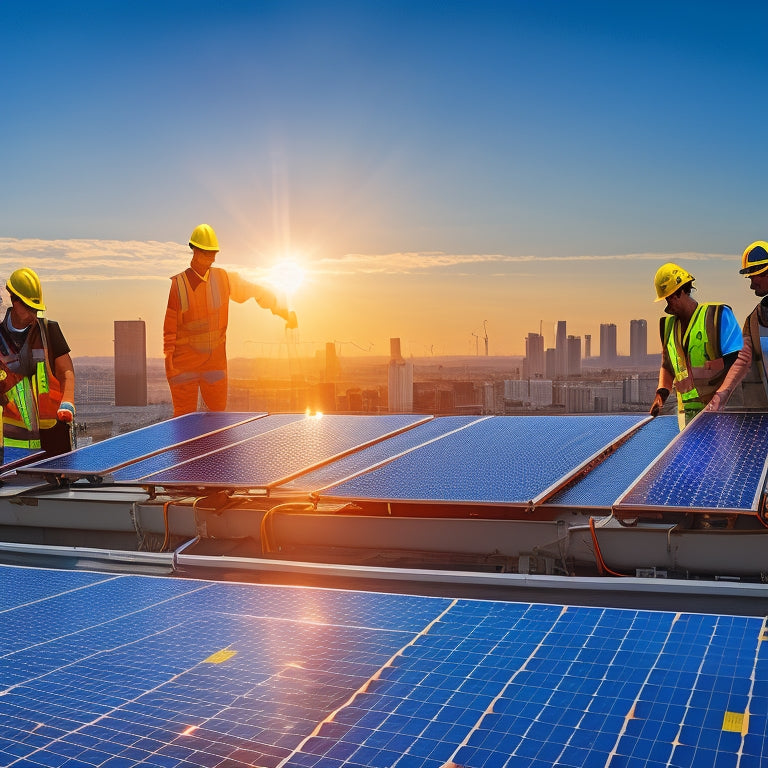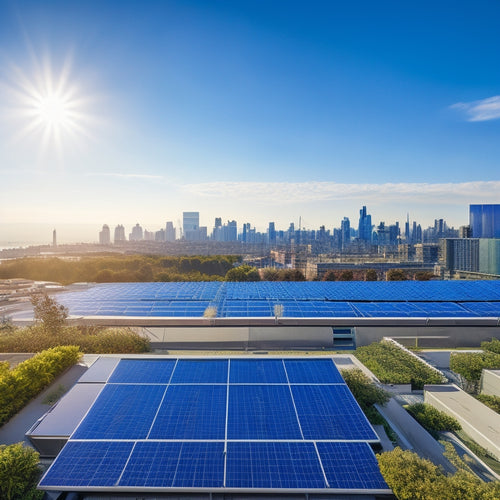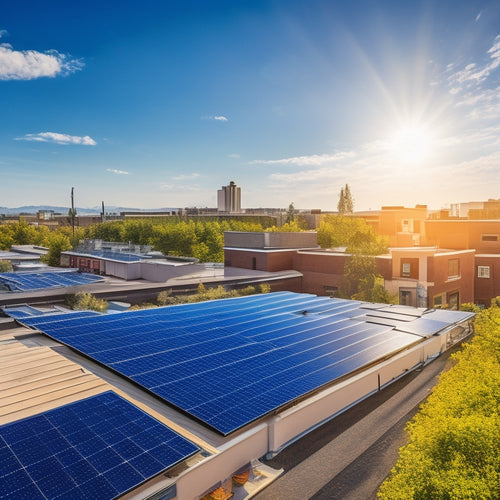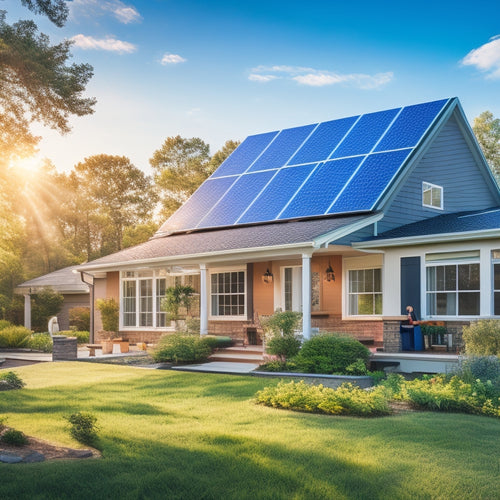
5 Best Practices for Industrial-Scale Panel Installation
Share
When undertaking industrial-scale panel installations, you must prioritize careful planning and execution to maximize energy yield, guarantee safety, and minimize environmental impact. You'll want to assess site feasibility and constraints, designing for best energy yield by maximizing panel performance. Select suitable panel technologies and secure safe, efficient installation. Ongoing monitoring and maintenance are also vital. By following these five best practices, you'll be well on your way to a successful installation. Now, take a closer look at each of these critical steps to make sure your project meets its full potential.
Key Takeaways
• Conduct thorough site assessments to identify environmental impact factors, infrastructure limitations, and local zoning regulations.
• Optimize panel design for maximum energy yield by considering orientation, tilt, spacing, and shading analysis.
• Select durable and efficient panel technologies that prioritize energy density and temperature coefficient for high-temperature environments.
• Ensure safe and efficient installation by adhering to strict safety protocols, prioritizing workforce training, and conducting regular site inspections.
• Implement ongoing monitoring and maintenance to track key performance metrics, conduct fault analysis, and optimize system performance for an extended lifespan.
Assessing Site Feasibility and Constraints
When evaluating a potential site for industrial-scale panel installation, you must carefully assess the site's feasibility and identify any constraints that could impact project timelines, budgets, or overall success.
You'll need to evaluate the site's environmental impact, including potential habitat disruption, water usage, and waste management. Additionally, review local zoning regulations to guarantee compliance with local ordinances and permits. Failing to do so can lead to costly delays or even project cancellation.
Conduct thorough site assessments to identify potential constraints, such as irregular terrain, extreme weather conditions, or existing infrastructure limitations. By doing so, you'll be able to minimize risks and secure a successful project outcome.
Designing for Optimal Energy Yield
To maximize energy production, you must carefully design your industrial-scale panel installation to optimize energy yield. This involves taking into account factors such as panel orientation, tilt, and spacing.
Proper panel orientation is essential as it directly affects energy output. You should consider the site's latitude and longitude to determine the best orientation. A shading analysis is also vital to identify potential obstructions and minimize energy losses.
By using specialized software, you can simulate various scenarios and identify the most efficient design. Additionally, consider the spacing between panels to promote adequate airflow and reduce heat buildup.
Selecting Suitable Panel Technologies
By evaluating the performance characteristics of various panel technologies, you can identify the most suitable option for your industrial-scale installation, considering factors such as efficiency, durability, and cost.
When selecting a panel technology, prioritize Panel Durability to guarantee a long lifespan and minimal maintenance. Energy Density is another essential factor, as it directly impacts the amount of energy generated per unit area. You should also consider the technology's temperature coefficient, as it affects performance in high-temperature environments.
Ensuring Safe and Efficient Installation
It is imperative that your installation team adheres to strict safety protocols and follows established best practices to guarantee a safe and efficient installation process. To achieve this, you should prioritize workforce training, focusing on risk assessment and hazard prevention. This ensures that your team is equipped to identify and mitigate potential risks, minimizing the likelihood of accidents and injuries.
| Safety Measure | Description |
|---|---|
| Risk Assessment | Identify potential hazards and develop strategies to mitigate risks |
| Workforce Training | Provide thorough training on safety protocols and best practices |
| Personal Protective Equipment | Ensure all team members wear appropriate PPE for the task at hand |
| Regular Inspections | Conduct regular site inspections to identify and address potential hazards |
Ongoing Monitoring and Maintenance
Regularly inspect and test your panel installation to guarantee peak performance. Undetected issues can lead to reduced efficiency, safety risks, and costly repairs. You'll want to track key performance metrics, such as energy output, temperature, and voltage, to identify potential problems early on.
Conducting regular fault analysis will help you pinpoint issues and make targeted repairs. This proactive approach will enable you to optimize system performance, reduce downtime, and extend the lifespan of your equipment.
Frequently Asked Questions
What Are the Benefits of Hiring a Certified Installation Team?
'Measure twice, cut once' is a mantra that resonates when considering the advantages of hiring a certified installation team. You guarantee quality assurance and ideal team dynamics, ensuring a seamless, efficient, and high-quality installation process that meets your expectations.
Can I Install Panels on a Roof With Multiple Skylights?
When you're planning to install panels on a roof with multiple skylights, you'll need to carefully assess Skylight Obstructions and potential Roof Penetration points to guarantee a secure, watertight seal, avoiding costly rework and ensuring peak energy harvesting.
How Often Should I Clean the Solar Panels?
You should clean your solar panels every 6-12 months to maintain peak performance, as dust accumulation can reduce panel efficiency by up to 25%, greatly impacting your energy output.
Are There Any Incentives for Using Recycled Materials?
Like a detective searching for clues, you're on the hunt for incentives for using recycled materials. You'll find them in carbon credits and green taxes, which can offset costs and boost your bottom line.
Can I Install Solar Panels on a Rental Property?
You'll need to check your rental agreement to make sure you're allowed to make modifications, and consider adding insurance coverage for the solar panels to protect your investment in case of damage or theft.
Related Posts
-

Business Solar Investments for Cost-Effective Sustainability
Investing in solar energy is a smart move for your business, providing a solid foundation for cost-effective sustaina...
-

Solar Energy Solutions for Small Businesses
Switching to solar energy can be a game changer for your small business. You'll enjoy significant cost savings on mon...
-

Solar Energy Grants and Incentives for Homeowners
Maneuvering solar energy grants and incentives is essential for reducing your installation costs. You can benefit fro...


